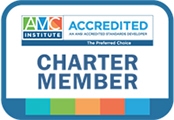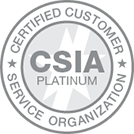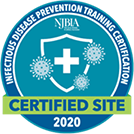The “fiduciary responsibilities” of non-profit directors, officers, trustees, and members of committees with Board-delegated authority have been defined by countless state and federal statutes, and years of legal decisions and commentaries. Basically, they can be boiled down to two distinct “duties.”
The Duty of Care says that volunteer leaders are expected to stay informed and make reasonable decisions a prudent person would exercise in a like position, under similar circumstances.
The Duty of Loyalty says that volunteer leaders owe an undivided allegiance to the organization for which they serve, and must make decisions in the best interest of the organization, not in their own best interest or the interest of others.
When a Board member’s interests and the interests of the organization conflict, it is essential the organization has policies and procedures in place to identify and manage the conflict. Real (or perceived) conflicts of interest can damage a nonprofit’s reputation and ability to accomplish its mission. In serious cases, the IRS can revoke the tax-exempt status of an organization if it determines the organization is being operated to serve private interests rather than its original, exempt purpose.
Conflicts of interest may arise in a variety of situations. One obvious example is a Board that bestows lavish pay, benefits, or perks upon itself far beyond what is offered by similar organizations. Another is a director who steers business to a vendor owned by her or someone she knows. Gifts, discounts, loans, or jobs for family or friends from a vendor that does business with the organization can be another source of conflict of interest if the volunteer has influence over the vendor-selection decision. More subtle cases involve using private information disclosed at Board meetings for personal gain, and influencing the organization’s activities or policies for the benefit of some outside entity.
Avoiding conflicts of interest doesn't mean a Board member can never sell products or services to the organization. What it does mean is that the rest of the Board must be aware of the conflict, and assure themselves that the deal is as good or better than the organization could get elsewhere. Non-profits are wise to protect themselves from even the appearance of conflict of interest by following these steps:
Adopt a written Conflict of Interest Policy
A quick search of the Internet will provide dozens of examples, from single paragraph resolutions to multi-paged documents. The IRS publishes a sample policy as Appendix A of the instructions for Form 1023. The key thing is to be as thorough as possible, without adopting a policy so complicated the organization is unable or unwilling to implement it. Since the laws governing non-profits vary from state to state, it is a good idea to have any policy reviewed by a lawyer familiar with association law.
Implement the Conflict of Interest Policy
Just having a policy is not enough. It must be implemented. At a minimum, each director should be asked to sign a statement that they have received a copy of the policy; read and understand the policy; agree to comply with the policy; and understand that to maintain its tax-exempt status the organization must engage primarily in activities which accomplish one or more of its tax-exempt purposes. It is advisable to regularly reference the organization’s Conflict of Interest Policy at Board meetings and reflect that this was done so in the minutes. Posting the policy on the organization’s website and publishing it in the organization’s annual report will help build public trust in the organization.
Conduct Periodic Reviews
To ensure the organization is operating in a manner consistent with its charitable purpose and not engaging in activities that could jeopardize its tax-exempt status, the IRS recommends conducting periodic reviews. Are signed conflict of interest statements up-to-date and on file? Are salaries and compensation benchmarked for reasonableness against some independent salary survey or other source? Do the organization’s business activities actually conform with the conflict of interest policies and reflect reasonable investment returns or payments for goods and services?
The IRS Form 990 now asks not only whether the non-profit has a written Conflict of Interest Policy, but also asks about the process to manage conflicts. All non-profits should start thinking of Conflict of Interest Policies as mandatory, not optional, tools for compliance.
Paul Mendez has worked in various trade and professional associations since 1982, with positions in executive management, marketing, publications, communications and member benefits. He is a graduate of the College of William and Mary, and is an Association Headquarters’ ASAE Certificate Program facilitator.




